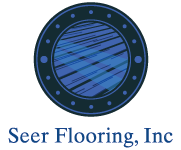 One of the least discussed but clearly noticeable aspects of your home’s flooring is how it impacts the sound in your home. As you consider different flooring materials, remember to consider how sound will carry more over hard surfaces. While the flooring itself does impact the acoustics of your home, other factors including the underlayment and installation method may as well.
One of the least discussed but clearly noticeable aspects of your home’s flooring is how it impacts the sound in your home. As you consider different flooring materials, remember to consider how sound will carry more over hard surfaces. While the flooring itself does impact the acoustics of your home, other factors including the underlayment and installation method may as well.
Sound Absorption
Rather than focusing on how loud or quiet various flooring materials are to walk on, let’s take a look at which materials absorb sound best. We’ll assume that all are properly installed and in the same home. If we compose a list and rank the materials from least sound absorption to most, it would be in this order:
- Tile—It’s the hardest of flooring materials, and there are few options in underlayment that can aid in sound absorption.
- Laminate—Although the layers in laminate flooring aid in sound absorption, the issue comes with installation. Most laminate flooring uses a floating installation method. This means that the floor moves with the sound. That movement can amplify the sound and its duration.
- Vinyl—Depending on the quality and how soft the materials are, vinyl could move up a few places, but generally it’s in the middle of the pack as far as sound absorption is concerned.
- Engineered wood—With multiple layers, of which wood is the topmost, engineered wood can absorb a good amount of sound.
- Hardwood—As it is almost always a nailed-down installation, hardwood flooring doesn’t move as much as other hard surfaces, leading to less sound transmission through vibration. Plus, wood absorbs more sound than other materials.
- Carpet—The fibers, like other soft objects in your home, absorb sound rather than reflect it, making carpet the quietest of the flooring materials.
Installation Can Improve Sound
You’ll notice that we emphasized that the flooring materials in this scenario needed to be properly installed. That means they all had an underlayment. A quality underlayment is essential. It can help reduce movement of the flooring itself. Movement can lead to increased noise. If the flooring you select has the option of a floating or glued installation, gluing will also help reduce sound reflection. The best installation method when it comes to acoustics is nailing down the floor. This is because the floor can vibrate with the sound, but it does not move as in a floating installation.
Seer Flooring can address your acoustic concerns and recommend the right flooring materials for your entire home. We will install your flooring with the right underlayment for your subfloor. Call us today at (727) 469-7963 for your free in-home consultation.
